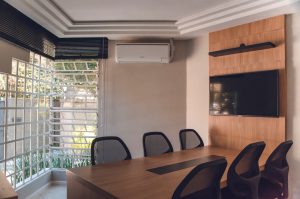SEER (Seasonal Energy Efficiency Ratio) and SEER2 are both measures of the efficiency of air conditioning and heat pump systems. However, there are some key differences between the two standards:
SEER vs SEER2
Before we talk about how the SEER2 standards affect heat pumps and air conditioners, let’s contrast and compare SEER and SEER 2 requirements.
Cooling vs Heating
SEER is a measure of the cooling efficiency of a system over a typical cooling season, whereas SEER2 also includes a measure of the heating efficiency of a system over an entire year.
Calculation Method
SEER is calculated by dividing the total cooling output of the system by the total energy consumed by the system during the same period. SEER2, on the other hand, includes the energy consumed for both heating and cooling over the entire year to obtain the overall performance of the equipment.
SEER Value
SEER rating typically is higher than the SEER2 rating, because most systems are more efficient at cooling than heating. An air conditioner will have a higher SEER rating than the same unit with SEER 2 rating because the SEER rating only takes into account cooling efficiency.
Popularity
SEER is more widely used in the industry and is the standard measure of cooling efficiency for air conditioners and heat pumps. SEER 2, on the other hand, is not as commonly used and is not an established industry standard.
What Has Changed in 2023?
Homeowners who have dealt with choosing a new air conditioning system or heat pump in the past are possibly familiar with the SEER standard established to advise how energy efficient their heating and cooling system is designed to be.
This standard changed as of the first day of 2023. New AC units produced and sold this year will instead be assigned a SEER2 rating. SEER2 standards are intended to provide a better gauge of typical home operating conditions whereas the older SEER rating utilized very precise protocols to determine ratings in ideal conditions. SEER2 standards include updated testing means that give a better indication of how a unit will operate in the real world.
This new testing involves updated criteria for minimum air handler static pressure, heat load calculations, coil-only units’ fan power, heating modes, variable speed factors, and off modes.
What is the Minimum SEER2 Rating for New Systems?
New HVAC regulations for 2023 require that air conditioning systems sold and installed in Arizona have a SEER rating of 15. This is equal to a SEER2 rating of 14.3, so homeowners will need to learn the difference in looking at the two standards.
If you planned ahead and replaced your air conditioning system or heat pump before the changes and increased costs took effect at the beginning of the year, this won’t be of any concern to you anytime soon—unless you intend to sell your home in the next couple of years.
While a system with a minimum rating of 14 installed before the end of 2022 is perfectly fine, you may find yourself in a bit of trouble if you intend to sell your home in the near future. New buyers may view your system as inefficient by current standards and steer clear of purchasing your home or they may request that the system be changed out before they will consider purchasing your property.
How Do SEER2 Standards Affect AC Costs?
The new SEER2-rated air conditioning units and heat pumps will also be more efficient and that means they will cost more. These costs will be driven by the increased costs of manufacturing a more efficient system, but inflation will also play a part in the increased costs.
The good news is that there are some new incentives available through the Inflation Reduction Act of 2022 that can help you with the costs of replacing a heat pump and upgrading other components in your home to make it more energy efficient.
How to select the right AC for SEER2 Standards
Modern air conditioners are increasingly using two-speed or variable-speed technology to improve efficiency. Unlike single-stage air conditioners, multi-speed units can save you considerably more energy. Understanding the different speeds available can help you choose the best air conditioner for your needs.
Single-Speed Air Conditioners
Single-speed air conditioners have one fixed speed, which means that they only operate at one speed regardless of the temperature outside. These air conditioners are the most basic and economical option, making them a popular choice for those on a budget. However, they can be less energy efficient than other types of air conditioners and may not provide as much comfort in extreme temperatures.
Two-Speed Air Conditioners
Two-speed air conditioners have two speeds, a high speed for hot days and a low speed for milder days. These air conditioners are more energy efficient than single-speed models and can provide better comfort in varying temperatures. However, they can be more expensive than single-speed models and may not be as energy efficient as variable-speed air conditioners.
Variable-Speed Air Conditioners
Variable-speed air conditioners have multiple speeds that can be adjusted to match the temperature outside. These air conditioners are the most energy-efficient option, as they can adjust their speed to match the temperature outside and only use the amount of energy needed to cool the space. They are also the most expensive option. Variable-speed air conditioners also have the ability to dehumidify and filter the air better, providing better indoor air quality.
Endnote
When choosing an air conditioner, it is important to consider not just the initial cost but also the long-term cost, including energy efficiency and maintenance costs. Single-speed air conditioners may be the most economical option up front, but they may end up costing more in the long run due to higher energy bills.
On the other hand, variable-speed air conditioners may have a higher initial cost, but they can save money in the long run through energy savings and improved indoor air quality.
You can learn a lot from the SEER2 ratings that are coming into place when looking to purchase a new system, and American Home Water and Air has you covered in this regard. Contact us today to learn more about how you can upgrade to a new AC based on the SEER rating changes.














